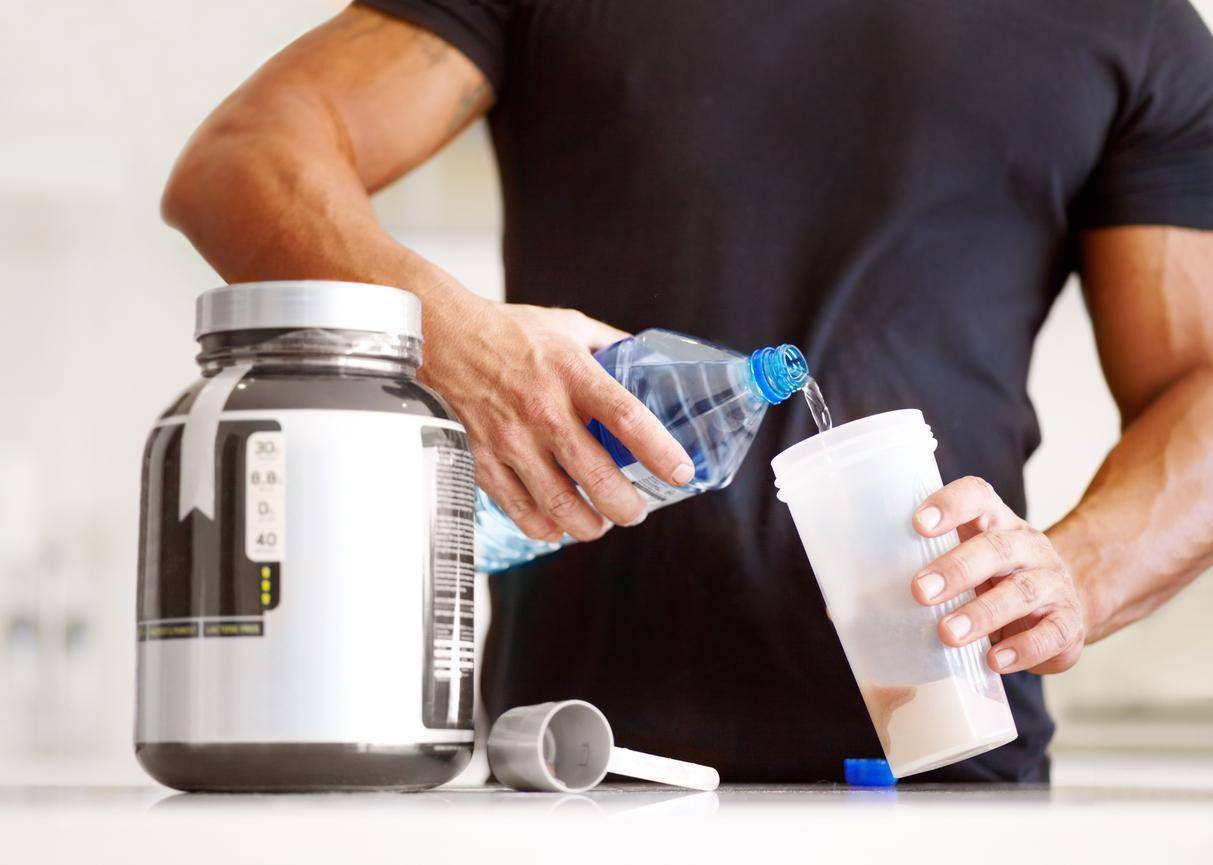The Definitive Guide to Protein Shakes
Do we really need to take them? What are the different types?
Protein is hot, trendy and just about everywhere.
From high protein yogurts like Arla and Skyr, protein energy balls and bars like Cliff and Bounce, and ready to slurp protein drinks like Weetabix On The Go and The Collective, if you need a post-gym fix, you never have to go far.
And whilst they were once the preserve of body-builders and serious athletes, protein shakes are now considered an essential part of a gym-goer’s arsenal.
We’re told that if you want to build lean muscle, protein shakes will help you do that, whilst speeding up your metabolism, aiding your performance and boosting energy – or so the marketing claims go.
Protein is, undeniably, an essential part of our diets. Current government recommendations for adult men are 55.5g a day for men and 45g for women – the average protein shake contains 20-40g of protein per serving.
After we consume protein, it is absorbed into the body and broken down into various amino acids which are then rebuilt into new proteins. This helps muscles recover and rebuild after working out.
“Protein is essential for growth and repair, and if you’re working out then your protein needs will be increased,” nutritionist Nichola Whitehead explained to The Independent. “This is because exercise increases protein turnover, i.e. the rate at which your body breaks down protein (catabolism) and rebuilds it (synthesis).”
And with minor celebrities and fitness “influencers” promoting various powders, bars and balls across social media, the market is booming.
For the year ending March 18th 2017, the sports nutrition food and drink market was worth £61 million in the UK, according to Mintel.
And this means customers are spoilt for choice, so how do you know where to start?
What are the main types of protein powder?
The most common type of protein powders are whey-based (whey is a byproduct of cheese).
That said, with the rise of plant-based diets, many people prefer vegan protein powders, which often contain more so-called superfoods. Vegan body builders prove that you don’t need to eat meat to bulk up, and studies have shown that plant-based proteins are just as effective as non-vegan alternatives too.
- Whey concentrate– the cheapest and most common protein powder, whey concentrate is largely considered to taste the best, although some people struggle to digest it. It contains lactose, is about 80 per cent protein, and an average serving would give you about 5g of carbohydrate and 3g of fat too.
- Whey isolate– as it’s filtered differently to remove more fat and carbs, whey isolate is about 90 per cent protein. It’s fast absorbing and contains practically zero lactose so is a good option for those with intolerances, but is pricier than whey concentrate.
- Whey hydrolysate– this is filtered yet again, bringing the protein content to about 95 per cent. Again, it’s absorbed quickly by the muscles but is yet more expensive.
- Casein protein– this form of protein breaks down slowly over several hours and also has high glutamine levels, which helps speed up recovery.
- Soy protein– a good option for vegetarians, soy also contains lots of glutamine and branched-chain amino acids (BCAAs) which help with recovery. It’s also meant to speed up metabolism
- Milk protein isolate – contains both casein and whey proteins and is full of amino acids.
When should you use them?
Although many people are adamant about drinking their protein shake within 45 minutes of finishing a workout, personal trainer Harry Smith believes “it doesn’t matter too much what time of the day or how frequently you have a protein shake, the most important thing is that you have your calories under control, you’re consuming enough daily protein, and you’re working out regularly.”
Ideally protein should be split across meals, and a protein shake could make up one of those, alongside some fruit.
When made simply from powder and water, a protein shake isn’t exactly a nutritious meal in itself. But if blended with other ingredients such as milk, nut butters, oats and fruit, they can be part of a nutritious and substantial meal.
Many people like to have protein shakes as snacks, because the protein helps fill you up.
Smith says he often adds a scoop of protein powder to his porridge too as breakfast or dinner: “Quick, easy, convenient and versatile.”
What do the experts recommend?
If you’re not lactose-intolerant, many personal trainers, including Smith, recommend whey to their clients.
For his part, Smith suggests using whey isolate: “It’s inexpensive, it mixes very easily with no clumps and is easily digestible,” he told The Independent. And of course, it’s important to check yours doesn’t contain lots of added sugar.
Smith says all the protein powders do a similar job, but isolate is a good option as it’s low in carbs and fat which keeps your shake relatively low in calories: “Of all the kinds I’ve tested like rice protein, pea protein and soy protein to name a few, whey isolate has proved itself to be the most versatile and also taste the best (compared to the same flavours in other types).”
Do we really need them?
Despite the ubiquity of protein shakes, opinions are divided, amongst both fitness experts and the general public.
Many personal trainers, even those who drink protein shakes and recommend them to their clients, stress that they’re not magic powders, nor are they any more effective than naturally protein-rich foods.
“I am a firm believer that food comes first,” celebrity personal trainer and owner of Eqvvs training, Nicola Addison, told The Independent. “A well balanced diet will provide you everything you need.”
What protein powders and shakes do offer, however, is convenience – it’s a lot easier to drink a shake on your way from the gym to the office than to cook a chicken breast. It’s probably more pleasant too (although many people find the majority of protein shakes taste somewhat artificial).
“There may be times and circumstances when you require a supplement to ‘bridge the nutritional gap’, act as a ‘back-up’ or help support you in case of deficiency,” Addison explains.
She stresses that where many people go wrong is forgetting a protein shake is food and must be factored into your total dietary picture: “A common mistake is adding a protein shake on top of usual daily food and even mixing it with big calorie items such a milk or porridge when there is no requirement to do so,” she says.
If you’re eating your normal breakfast after working out and adding a little protein powder, that’s fine. But if you’re having it as an extra snack, you may be hindering your chances of reaching your fitness goals.
Personal trainer and founder of The 2 Meal Day Max Lowery goes one step further and says he believes there’s no need for protein shakes at all: “I am a firm believer that taking any protein supplements are completely unnecessary when you are eating a diet that is full of nutrient dense foods,” he told The Independent.
A former competitive sprinter, he says he had no problems training six times a week without taking any protein supplements.
Lowery believes protein companies and sports drink manufacturers have “grossly exaggerated” how much protein we need in our diets, adding that even vegans should be able to get an adequate amount if they’re careful with what they eat.
And, Lowery points out, many people believe they’ll look like the fitness influencers who promote protein shakes, which is a problem: “[The influencers] look like that because they train hard and eat well,” he says. Not because they drink protein shakes.
The bottom line
Whilst some people wax lyrical about how protein shakes have helped them transform their bodies, many others try them for a short while before realising they’re making no difference.
Protein shakes can be convenient and form part of a meal, but if you’re not a professional athlete, you may be consuming more than you need to if you’re drinking large shakes every day.
“There is no quick fix to getting fit and healthy, don’t waste your money consuming dust,” Lowery says. “Eat real food.”
Source: Power
“This” by:


